#orinoco crocodile
Explore tagged Tumblr posts
Text
So something that a lot of people are seemingly unaware off is the "rostral boss" or simply face bump seen in some American Crocodiles (Crocodylus acutus). I've seen it a few times now that folks are really surprised to see it, so I think its worth sharing a bit on that and its importance to understanding how crocs came to America.
For starters, the rostral boss is a large bump that is located on the snout of some crocodiles just before the eyes, covering the back of the nasal bone and areas of the prefrontals, lacrimals and parts of the frontal bone. This boss, among modern crocs, is most prominent in the American Crocodile. Sidenote, I know its a pain, but here American Crocodile (capitalized C) means Crocodylus acutus. When meaning the crocodiles of America, I'll use Neotropic crocodiles. Also tho I'm usually liberal with the term, here crocodile specifically refers to the genus Crocodylus. Good? Good. Anyhow, this kinda gives them a look thats been likened to the Triassic phytosaurs and makes individuals with said bump really distinct. Below are some pictures which show different indivudals with less and more pronounced bosses.
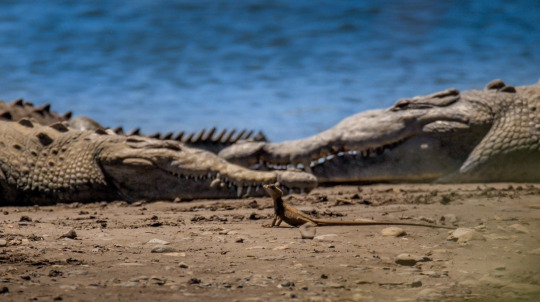




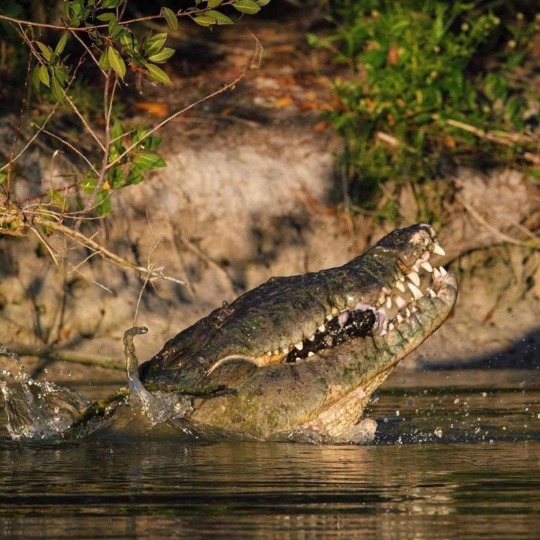
Now this feature is not unique to American Crocodiles (again meaning C. acutus, I know the terminology is confusing), but can be seen in at least some other neotropic Crocodylus species. Now I've yet to see images of either Morelet's or Orinoco Crocodiles with the same and they don't appear to have been recognized with them by older literature, but there are some Cuban Crocodile skulls also showing a slight boss. If you look at the two photos below, you can see an American Crocodile skull on the left and several skulls of Cuban Crocodiles on the right (from the Quaternary Sawmill Sink on the Bahamas). It's comparably subtle in the Cubans, but there is a boss present in these skulls.
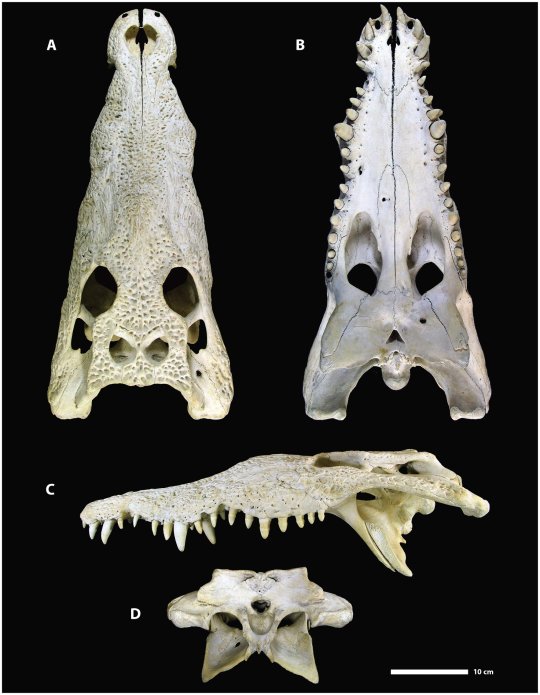

The fun part is that this isn't just a random trait that these crocodiles got out of nowhere. No, the rostral boss is actually a trait thats likely to be ancestral to ALL Crocodylus species of the Neotropics (so again, Morelet's, Cubans, Orinocos and Americans). The oldest known Crocodylus species from the Americas is Crocodylus falconensis from the Pliocene of Venezuela. And guess what, it had that very same bump on its face.


But that's not where the trail ends. No. Back in the 1940s a crocodile was found in Miocene sediments of Northern Africa that had a similar bump. Meaning on the other side of the Atlantic. This was largely ignored at the time, despite the similarities to American and Cuban Crocodiles and their rostral bosses being known back then. But more recently, scientists have taken a second look at this species, Crocodylus checchiai, and concluded that it is a likely ancestor to today's Neotropic crocodiles.
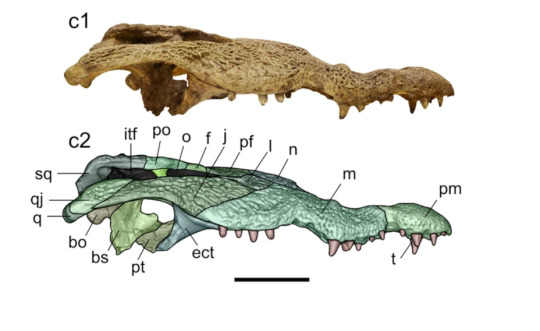

We already knew that African crocodiles (Nile Crocodiles and Sacred Crocodiles) were more closely related to Neotropic crocodiles than to Australasian ones (like Salties, Freshies and Muggers), but this essentially provided some really solid evidence for how crocs got to America. Sometime between the Miocene and Pliocene, Crocodylus checchiai (or a relative or descendent) swam across the Atlantic and landed in the area around the Caribbean, spreading and giving rise to the four true crocodiles that still inhabit the region. Which I personally think is really cool.
#crocodile#crocodiles#american crocodile#evolution#cuban crocodile#morelets crocodile#orinoco crocodile#crocodylus falconensis#crocodylus checchiai#reptiles#crocs#palaeblr
271 notes
·
View notes
Text


13 notes
·
View notes
Text


Inktober #1-2 prompts via Faunatober
#art#my art#p.h.#drawing#my drawing#ink#inktober#ink drawing#inktober23#Faunatober#faunatober2023#animal#animals#crocodile#bird#shrike#orinoco crocodile
12 notes
·
View notes
Text


Orinoco Crocodile lying within water.
#crocodile#furry#scalie#furry art#landscape#Orinoco crocodile#anthro#anthro art#furries#digital art#art#artwork#animals#mountains#erivicul
0 notes
Text




#nc aquarium#pine knoll shores#north carolina#nc#aquarium#nc aquarium at pine knoll shores#north carolina aquarium at pine knoll shores#North Carolina aquarium#north carolina aquarium pine knoll shores#nc aquarium pine knoll shores#Orinoco#crocodile#Orinoco crocodile#critically endangered#endangered#endangered species#critically endangered species#reptile#crocodiles#reptiles#crocodilian#crocodilians#Atlantic beach#Atlantic beach nc
1 note
·
View note
Text
every time I see that post about that person discovering that Asian saltwater crocodiles are actually endangered and now they’re considered an expert in the species I get upset there’s no such thing as an Asian saltwater crocodile they’re just called saltwater crocodiles because they’re not just native to Asia they’re in Australia too and they’re. not endangered. They’ve been protected since the 70s and their population has been increasing since then they’re currently classed as least concern. come on guys at least pick an actually endangered crocodilian for your tumblr story there’s so many to choose from and raise awareness for!! Chinese alligators, Orinoco crocodiles, Philippine crocodiles, Cuban crocodiles, Siamese crocodiles, West African slender-snouted crocodiles, and gharials are all actually critically endangered PLEASE
14 notes
·
View notes
Note
HOW DO YOU THINK OF NAMES FOR YOUR CHARACTERS?? WRECK IS SUCH A GOOD NAME FOR A CROCODILE
Sometimes it is really hard.
He was almost named Orin after the Orinoco Crocodile.
But that croc doesn't live near mangroves.
29 notes
·
View notes
Text
Phylogeny can be funny, you'd think that the closest relatives to African crocodiles would be the ones in Asia and Australia like the salties or muggers, but instead their closest relatives are New World crocs like the American and Orinoco crocodiles.
16 notes
·
View notes
Note
Silly Game Time: SOUTH AMERICAN ANIMAL TIME! Use a random letter generator, then look up South American animals that start with that letter. What's one of them? Post a picture of it!
O.
Orinoco crocodile.

2 notes
·
View notes
Text
Croc colours and patterns
Somewhat inspired by a recent post by Joschua Knüppe, I feel like it's a good thing to remind people just how diverse colours and patterns in modern crocodilians are. When I see people make art, it often seems to stick to grey or yellowish-brown tones, which is of course not incorrect. But theres a lot of, imo, underappreciated variety still. It's also worth noting beforehand that patterns are most striking in younger individuals and naturally become more muddy the older and larger an animal becomes. But as you will see, even some decently large and old animals may maintain a striking appearance.
Take this alligator for example. Gators tend to be on the darker side, dark greys to black, sometimes countershaded and sometimes pretty consistent. Some individuals, like this one photographed by Gar Luc, still retain clearly visible stripe patterns from when they are younger.
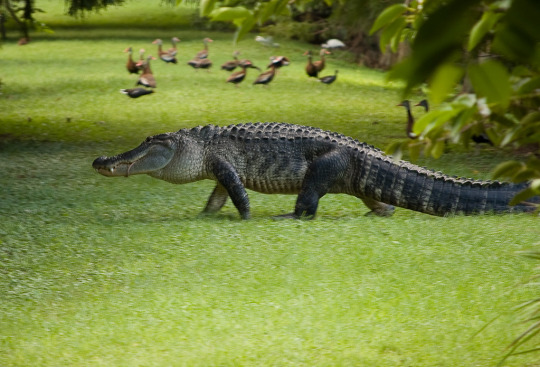
Or take one of my favourite species, the Cuban Crocodile, which can appear almost bright yellow with a dense pattern of leopard spots. Of course like with the gator you can find individuals that are much more drab, with washed out colours, but individuals with clearly defined patterns still exist.

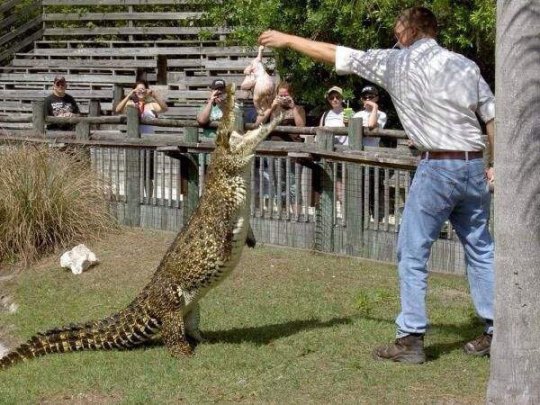
Then there's gharials of course. They can range quite a bit in colouration. They can be brown, especially younger ones and females and I've seen males range in colour from a drab grey to almost a light blue or even something that could be described as metalic black.
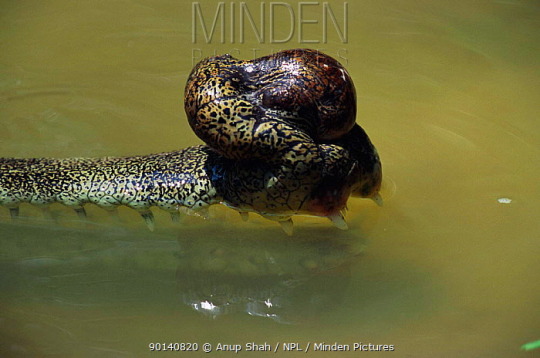
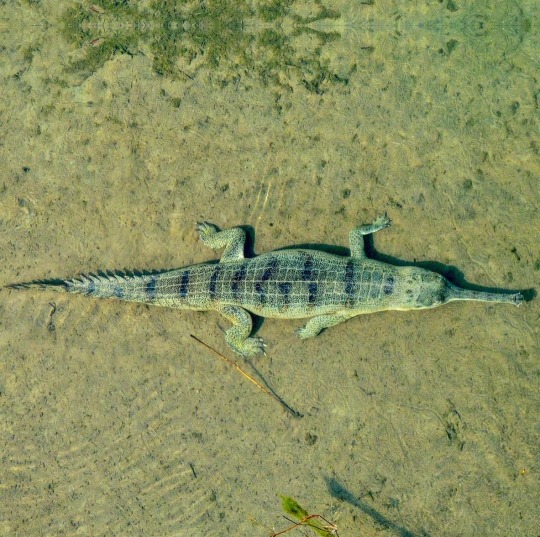
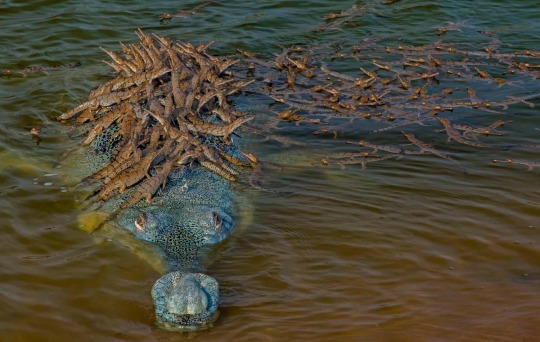
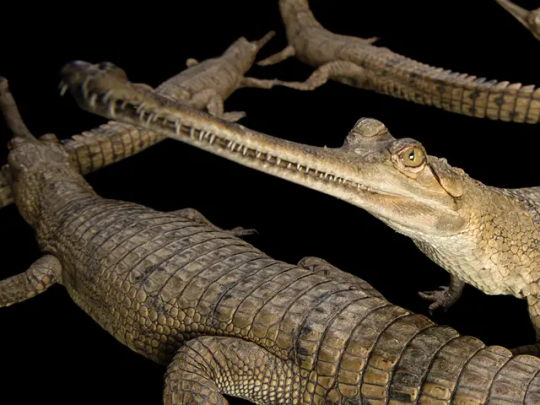
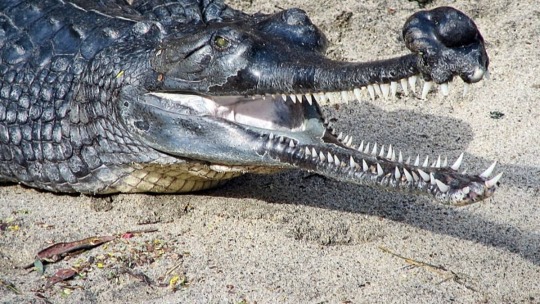
Black Caimans are also pretty interesting in my opinion and pretty easy to tell apart from other species once you pay attention to their colour. They are primarily a deep dark black of course, but what sets them apart from spectacled and other caimans is that very fine pattern of thin white stripes across the flanks that creates this beautiful contrast. They can also have patches of brown like the one on the right.
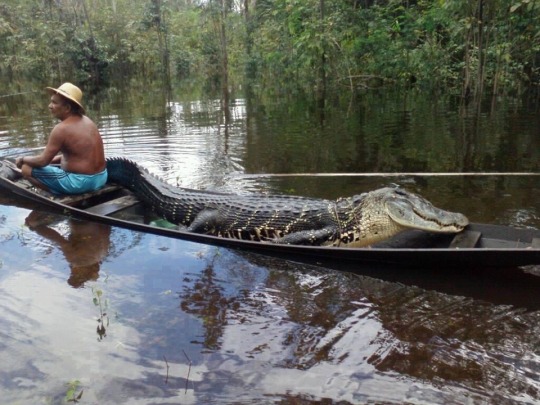

Orinocos also vary a great deal. Tho I know less about them than I wish I did, I know that individuals can range from drab brownish greys to yellow to somewhat earthy browns that almost range into reds.


The next ones a bit of an outlier. There are specific cave dwelling dwarf crocodile populations in western Africa with striking orange colouration. Tho this one is not exactly natural pigmentation to my knowledge and instead the result of the chemicals present in the water they inhabit, brought there by bat guano. Still very pretty animals.
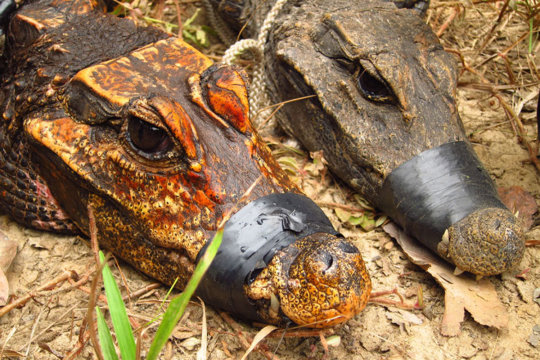
And then there's Paleosuchus, the dwarf caiman which contains two species. Again highly varied. The first image, which I believe is a Schneider's dwarf caiman, shows a very earthy brown. The others, which unless I'm mistaken are Cuvier's dwarf caimans, show colours ranging from dark with a rusty head, black to this still beautifully patterned individual. Of course these variations are also subject to change with age.
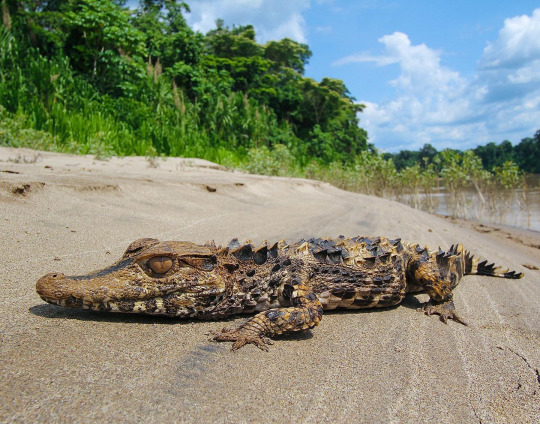
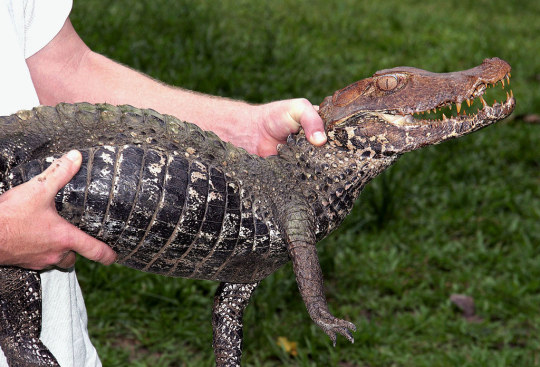
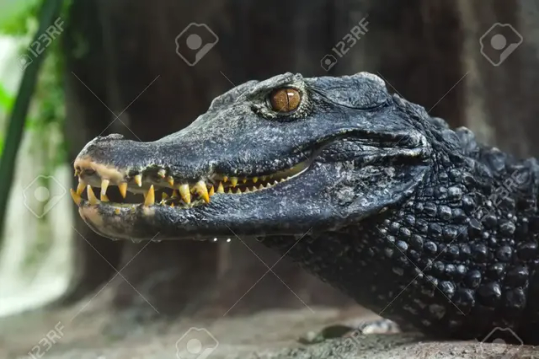
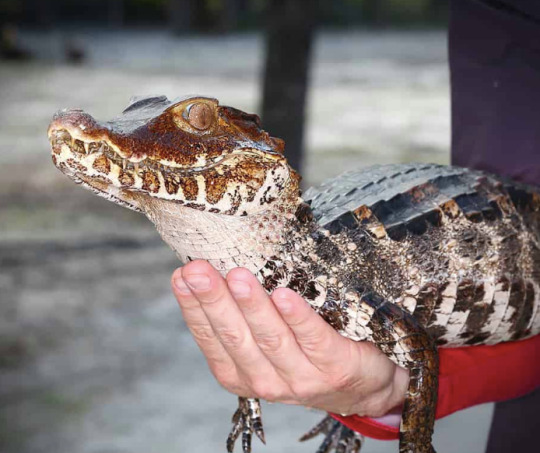
While salties aren't exactly known to be the most vibrant, I'd be remissed if I didn't mention this specific one. It's kept in a zoo in Germany and has this almost bizarre colour combination of creamy white underbelly and chocolate brown top which I've never seen in another saltwater crocodile. Photos by my friends Markus Bühler from the Bestiarium blog and René Dederich

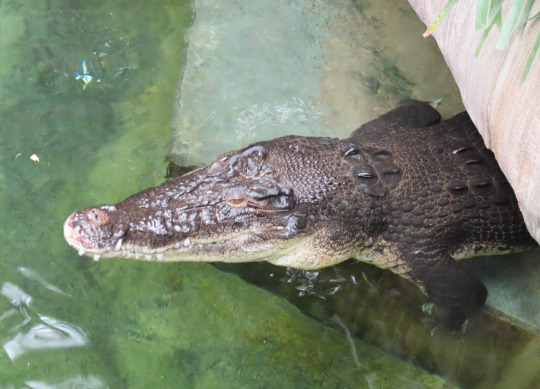

Spectacled, Broad-snouted and Yacare caimans I'll give a quick shout out. I think most people are familiar enough with how they look like and while their colours aren't anything special, I still think one should appreciate their patterns of spots and stripes and facial markings.

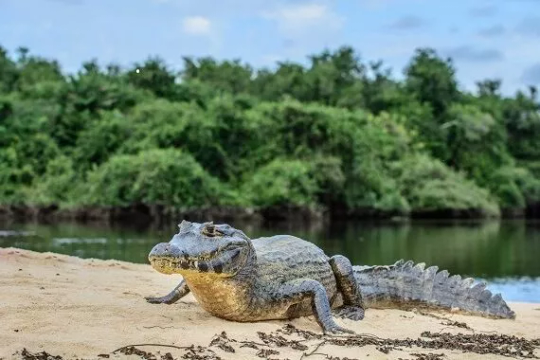
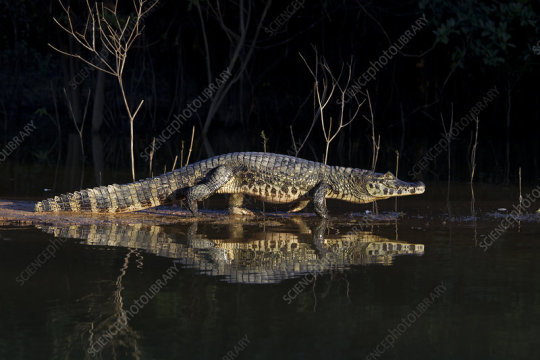
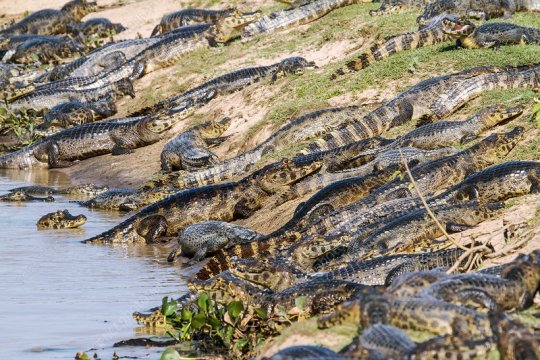
The last one I wanna highlight is the false gharial, Tomistoma, another one of my favourites. Part of the reason why being its at times beautiful reddish-brown colours.
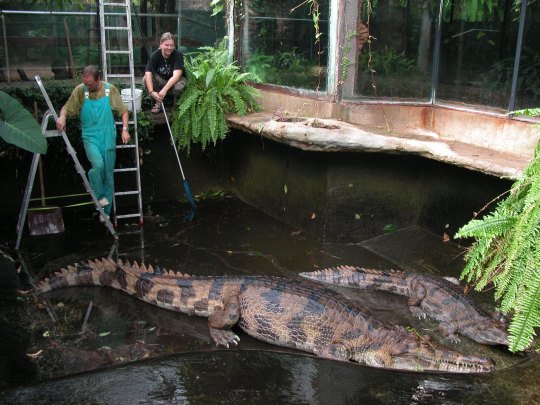
#crocodiles#crocs#gharial#gator#alligator#crocodilian#herpetology#reference#colours#inspiration#paleoart inspiration
2K notes
·
View notes
Text



7 notes
·
View notes
Note
can you tell me some really silly things about crocodiles and alligators??? man i wanna know what you know :3
Well, fun fact, there's only two alligator species in the world. There are 17 crocodiles, 2 gharials, and 6 caiman. But because there are so many American Alligators (about 5 million), they alone have a higher population than every other species combined. They're not endangered, however the US lists them as a protected species, because hunters can mistake them for American Crocodiles, which are critically endangered. So to prevent them from accidentally killing one, alligators are also pretty regulated in terms of hunting.
The other alligator species is the Chinese Alligator. There's only about 120 of them left in the wild, and they're pretty hard to find, because they bury underground.
Orinoco crocodiles are one of my faves because they just look like pancakes basically. I also like gharials because they look fucking ridiculous.
Also look up the noises baby crocodiles make. They sound like terrible sound effects from 1950s space movies.
5 notes
·
View notes
Text
crocodilians are so cool
So there's like a couple dozen species of Crocodile (Nile, American, Saltwater, Orinoco, etc)
But only two species of alligator (American, Chinese), and they exist at the same latitude, but on opposite sides of the planet
Then there's the Gharials and False Gharials, with their freaky lil thin mouths, and the Caiman, who look like Lite Alligators
5 notes
·
View notes
Text
Species
There are a total of 18 extant species have been recognized.
American crocodile (Crocodylus acutus)
Hall's New Guinea crocodile (Crocodylus halli)
Orinoco crocodile (Crocodylus intermedius)
Freshwater crocodile (Crocodylus johnstoni)
Philippine crocodile (Crocodylus mindorensis)
Morelet's crocodile (Crocodylus moreletii)
Nile crocodile (Crocodylus niloticus)
New Guinea crocodile (Crocodylus novaeguineae)
Mugger crocodile (Crocodylus palustris)
Saltwater crocodile (Crocodylus porosus)
Borneo crocodile (Crocodylus raninus)
Cuban crocodile (Crocodylus rhombifer)
Siamese crocodile (Crocodylus siamensis)
West African crocodile (Crocodylus suchus)
Osborn’s dwarf crocodile (Osteolaemus osborni)
Dwarf crocodile (Osteolaemus tetraspis)
West African slender-snouted crocodile (Mecistops cataphractus)
Central African slender-snouted crocodile (Mecistops leptorhynchus)

5 notes
·
View notes
Text
im watching this like. not very focused i can't process the subtitles fast enough and the audio is Hard too. they just were showing this orinoco crocodile or whatever and how it'd look next to a human and it suddenly GREW to a size of a human standing it was so scary. they were like "yea it was probably bigger when dinosaurs were around, just like this" oh my god don't scare me like that. i thought that was real and swimming somewhere rn for a second that's a terrifying thought
1 note
·
View note
Text
Hey Builders, so I’m gonna cancel my Zoo project to a somewhat Reptile House called Reptilia. It’s gonna be a big building with multiple Reptiles on every Enclosure. There’s also a viewing area of the Orinoco Crocodile and the Northern Caiman Lizard all in one piece of Enclosure. Also the blocks are inspired by The Chaotic Craft’s reptile House but smaller than mine. Btw here’s a photo of the logo

I may also gonna include an Aquarium and a Mammal House but I’ll try my best. Cheers
0 notes